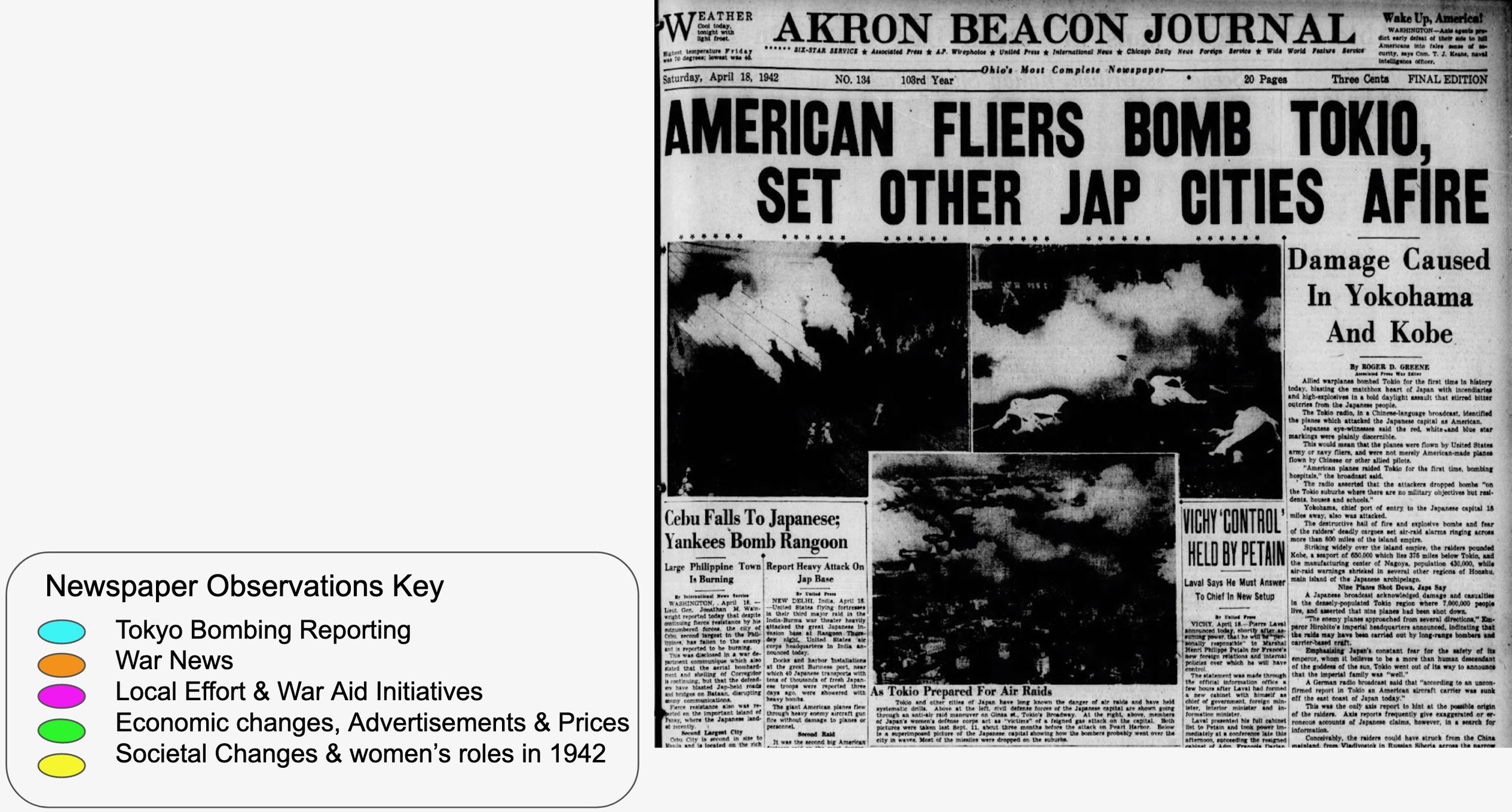Beyond the Headlines - Lessons to Accompany Unsettled History
Introduction
They were called the “Doolittle Raiders,” named after their commanding officer and American aviation legend Lt. Col. James “Jimmy” Doolittle. April 18, 2022 marked the 80th anniversary of what was a pivotal World War II mission. It was America’s answer to Japan’s attack on Pearl Harbor. After four disastrous months of losses to the Japanese in places like the Philippines and Wake Island, President Franklin Roosevelt needed a victory to restore morale and enthusiasm for the war effort.
The story begins on April 18, 1942. Sixteen U.S. Army Air Forces crews are about to embark on their first combat mission. It might also be their last. The B-25 bombers they are flying were never intended to launch from an aircraft carrier. But that’s what they are about to do. They have enough fuel to reach their targets, military, and industrial sites in Tokyo and five other Japanese cities. But they won’t get much further. And even if they somehow make their way to China, and relative safety, no one knows they are coming.
The challenge is to see past old black and white pictures to discover the individuals who actually lived this story.
In the section below, review the educational resources associated with this documentary, as well as downloads you can share with your students.
Hometown Newspapers and Group Activities
The first step of this class activity is to screen a portion of the American Public Television documentary Unsettled History: America, China and the Doolittle Tokyo Raid.
Unsettled History: America, China and the Doolittle Tokyo Raid
(classroom excerpt #1, Mission Training)
Unsettled History: America, China and the Doolittle Tokyo Raid
(classroom excerpt #2, Arrival in China)
Unsettled History: America, China and the Doolittle Tokyo Raid
(classroom excerpt #3, The Rescue)
Next, students will get to know the five flyers featured in this film – and the towns that they were from – in lessons that illustrate what life was like on the Home Front when the news of the Doolittle Raid arrived.
Divide the students into five groups. Each group will read the April 18, 1942 edition of one of five featured airmen’s hometown newspapers: 1st Lt. Bill Bower’s small Ohio city near Akron, 1st Lt. Tom Griffin’s Green Bay Wisconsin, 1st Lt. Herb Macia’s tiny historic Tombstone Arizona, 2nd Lt. Charles Ozuk’s booming Chicago, and Cpl. David Thatcher’s Bridger, Montana, near Billings.
In addition to war news, students should explore what life might have been like for them in April 1942. They’ll discover a world without shopping malls and cell phones, a time when women once seen only as wives and homemakers became part of the war effort, when a good meal would cost you $.85, and people of color lived on the margins of society.
Click on hyperlinks to see full newspapers.
Click on the final hyperlink to download an “empathy map” students can use to report their findings at the end of class.
CONTENT ALERT: The words "Jap" and "Japs" were derogatory terms commonly used in the 1940's, when referring to Japanese or Japanese-Americans, and mirror racial stereotypes. While these words are present within the historical context of period newspapers, their use is in no way encouraged or acceptable.











